Doshi Levien's Almora lounge chair for B&B Italia feels like being "wrapped in a soft, warm blanket"
Milan 2014: Anglo-Indian design duo Doshi Levien has created a lounge chair for B&B Italia based on memories of a trip to the Himalaya mountains in India (+ interview).
The Almora chair aims to recreate the experience of visiting a town of the same name in the Himalayan foothills.
"The idea of the chair really comes from this memory of seeing the snow-capped Himalayan peaks wrapped in a soft, warm blanket," said Jonathan Levien.
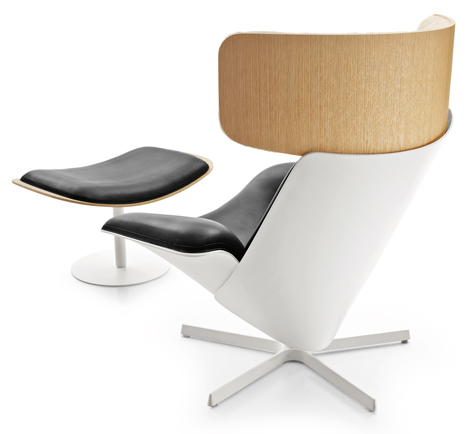
"You are wrapped in the soft warm blanket so you enjoy the mountains but you are warm where you are," added Nipa Doshi. "It was the idea of really capturing this in a piece."
She added: "Of course at the end of the day it is a chair, but how do you replicate this feeling of being in the cold air but being warm? So I think that although the chair is open, it is also warm."
The chair features a two-part conical plastic frame that forms the seat and back, plus a curved oak headrest that appears to balance on top of the frame.
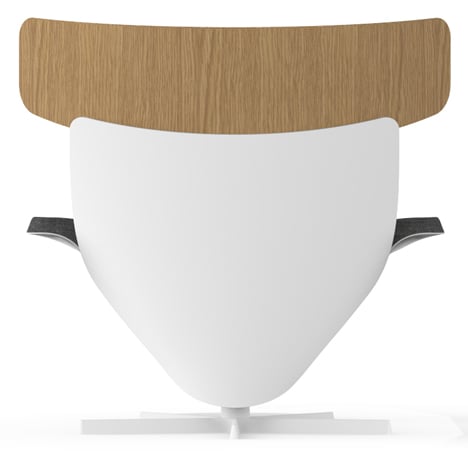
The seat is upholstered in leather while the headrest is finished in shearling. The chair is mounted on a five-spoke aluminium swivel base and the accompanying ottoman has a round steel base and a curved wooden seat upholstered in leather.
The chair is the first product designed by Doshi Levien for Italian brand B&B Italia. It launched this week in Milan during the Salone del Mobile.
Here's a short interview with the designers conducted in Milan:
Marcus Fairs: Tell us about the new lounge chair you're showing today.
Nipa Doshi: The chair is called Almora. It is our new lounge chair for B&B Italia: two years in the making and designing. The idea of the chair really comes from this memory of seeing the snow-capped Himalayan peaks wrapped in a soft warm blanket.
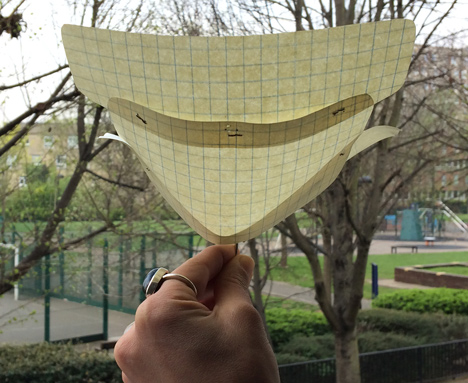
Jonathan Levien: What, the peaks are wrapped in soft warm blankets?
Nipa Doshi: No, you are wrapped in the soft warm blanket so you enjoy the mountains but you are warm where you are. And we imagined this chair almost to have the same feeling of warmth and comfort and to use the chair to enjoy the view outside and to sleep in; or equally to be with your children and read stories. It's a chair very much to be alone in, but also to be with the family.
Marcus Fairs: What does Almora mean?
Nipa Doshi: Almora is the name of this place in India, in the Himalayan mountains.
Jonathan Levien: And where we were staying in the mountains was in this lodge, which had a really nice outdoor space. Indoor and outdoor were connected. We want to feel warm and secure in the place in which we are staying but very much engaged with our surroundings so the chair, in its gesture and form, is very open and it is almost like it is embracing not only the person sitting in it but also the view.
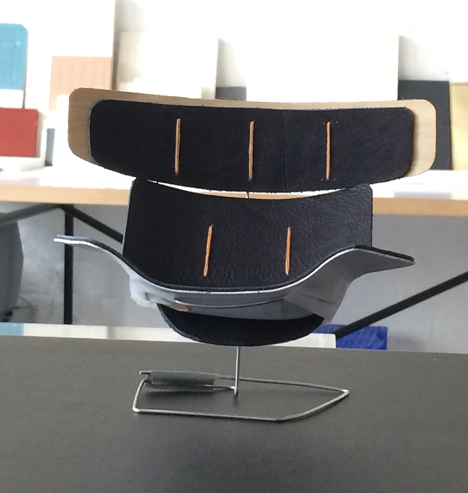
Marcus Fairs: Is the chair really inspired by this village in the Himalayas? Or is it just a nice story?
Nipa Doshi: No, it is really. The materiality of the piece, you can see it is… the shearling, the leather. They are all materials that are very tactile, very human, living materials. It was the idea of really capturing this in a piece. Of course at the end of the day it is a chair, but how do you replicate this feeling of being in the cold air but being warm? So I think that although the chair is open, it is also warm.
Jonathan Levien: There has to be a starting point to every piece and for us it is a feeling. It is what do we want to evoke in the piece. We don't come from a functional perspective. It is more from a sculptural point of view and that means thinking about the space in which it is going to be used and dreaming about that. But then of course that is only part of the project and the other part is what is the materiality of the chair? What is the technology, the structure? How are the parts composed? We are hiding the technology, we are trying to create a sense of overlapping forms and floating components and hide the technology. There are many strands to it and for us it helps to start with a dream, with a place, before it takes shape.
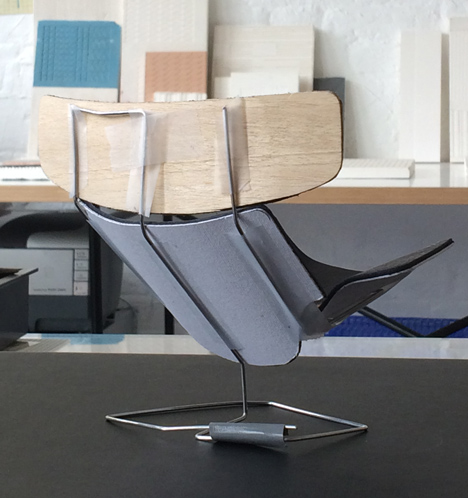
Marcus Fairs: You are an Anglo-Indian couple and a lot of your work up to now has featured identifiable Indian motifs or forms. But this, if the story hadn't been explained to me, I wouldn't of thought of India and the mountains.
Nipa Doshi: But in a way I think it is not about India but about the mountains and I think it is more about nature. Almora was more a fictitious place; it could be Switzerland and the Alps. It can also be just looking at your garden. Many of us, even if we live in a city, have a very narrow view where we can have nature so it works in a home so the idea was very much about the experience you want to have in a home rather than a place as such.
Jonathan Levien: But, it is true also that the cultural aspect in our work is not as obvious in this design in that you cannot see so clearly a partnership of Nipa and Jonathan in this design. It is not expressed in terms of a design-meets-a-decorative-graphic approach but I think it is very much a coming together of Nipa's sense of visual identity and my ability to translate that into three-dimensions.